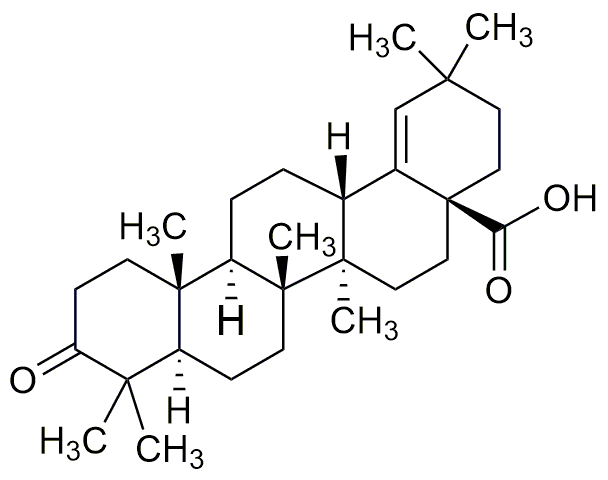Moronic acid is widely utilized in research focused on:
- Pharmaceutical Development: This compound is explored for its potential anti-inflammatory and anti-cancer properties, making it valuable in the development of new medications.
- Cosmetic Formulations: Due to its natural origin and beneficial properties, moronic acid is incorporated into skin care products for its moisturizing and anti-aging effects.
- Food Industry: It is being studied for its use as a natural preservative and flavor enhancer, offering a safer alternative to synthetic additives.
- Agricultural Applications: Researchers are investigating its role as a biopesticide, providing an eco-friendly option for pest management in crops.
- Material Science: Moronic acid is also being evaluated for its potential in creating biodegradable polymers, contributing to sustainable material development.
General Information
Properties
Safety and Regulations
Applications
Moronic acid is widely utilized in research focused on:
- Pharmaceutical Development: This compound is explored for its potential anti-inflammatory and anti-cancer properties, making it valuable in the development of new medications.
- Cosmetic Formulations: Due to its natural origin and beneficial properties, moronic acid is incorporated into skin care products for its moisturizing and anti-aging effects.
- Food Industry: It is being studied for its use as a natural preservative and flavor enhancer, offering a safer alternative to synthetic additives.
- Agricultural Applications: Researchers are investigating its role as a biopesticide, providing an eco-friendly option for pest management in crops.
- Material Science: Moronic acid is also being evaluated for its potential in creating biodegradable polymers, contributing to sustainable material development.
Documents
Safety Data Sheets (SDS)
The SDS provides comprehensive safety information on handling, storage, and disposal of the product.
Product Specification (PS)
The PS provides a comprehensive breakdown of the product’s properties, including chemical composition, physical state, purity, and storage requirements. It also details acceptable quality ranges and the product's intended applications.
Certificates of Analysis (COA)
Search for Certificates of Analysis (COA) by entering the products Lot Number. Lot and Batch Numbers can be found on a product’s label following the words ‘Lot’ or ‘Batch’.
*Catalog Number
*Lot Number
Certificates Of Origin (COO)
This COO confirms the country where the product was manufactured, and also details the materials and components used in it and whether it is derived from natural, synthetic, or other specific sources. This certificate may be required for customs, trade, and regulatory compliance.
*Catalog Number
*Lot Number
Safety Data Sheets (SDS)
The SDS provides comprehensive safety information on handling, storage, and disposal of the product.
DownloadProduct Specification (PS)
The PS provides a comprehensive breakdown of the product’s properties, including chemical composition, physical state, purity, and storage requirements. It also details acceptable quality ranges and the product's intended applications.
DownloadCertificates of Analysis (COA)
Search for Certificates of Analysis (COA) by entering the products Lot Number. Lot and Batch Numbers can be found on a product’s label following the words ‘Lot’ or ‘Batch’.
*Catalog Number
*Lot Number
Certificates Of Origin (COO)
This COO confirms the country where the product was manufactured, and also details the materials and components used in it and whether it is derived from natural, synthetic, or other specific sources. This certificate may be required for customs, trade, and regulatory compliance.


